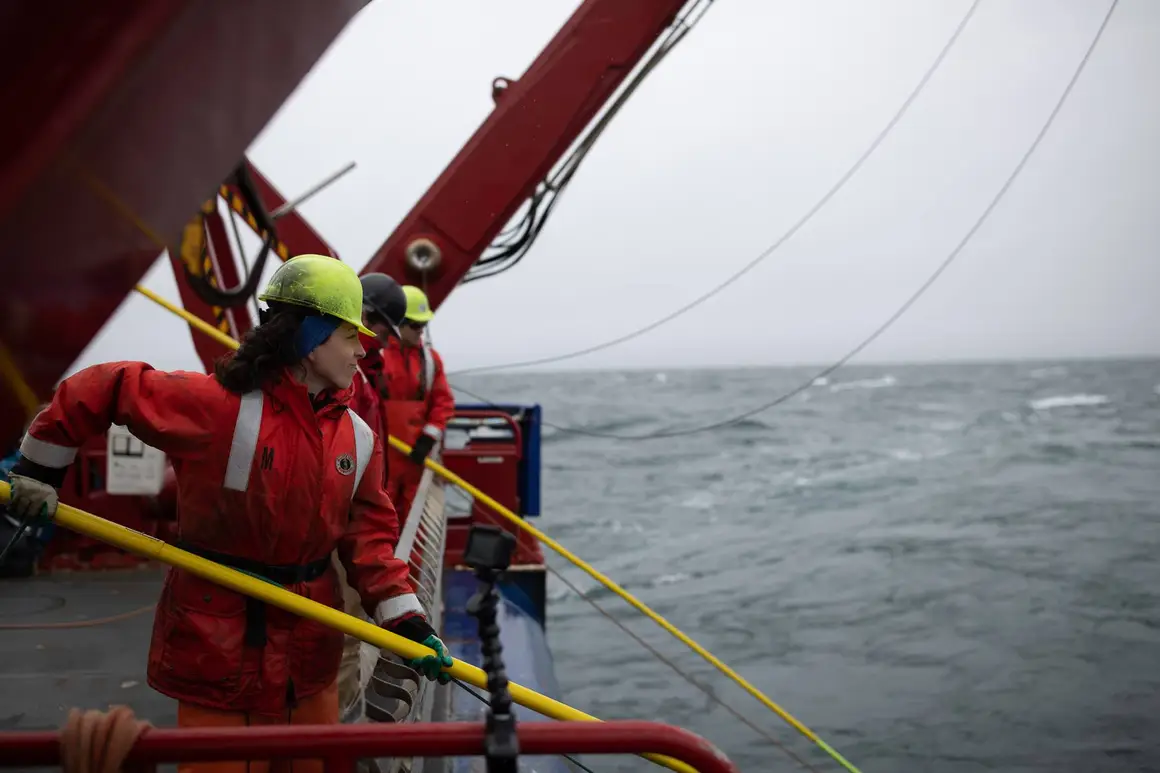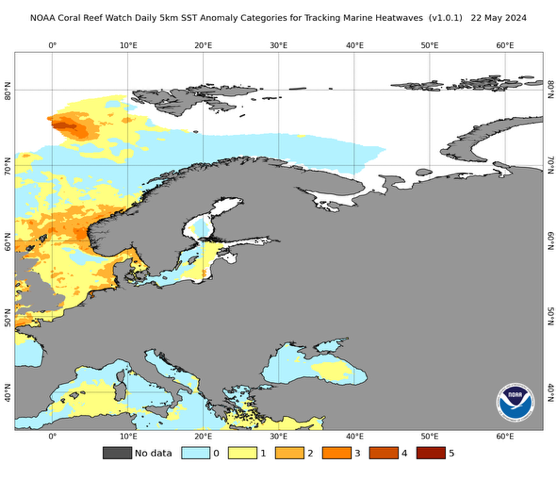2023 was another year of records. The sea temperature reached its highest point ever, and on an average day in 2023, one third of the entire ocean was hit by a marine heatwave, according to World Meteorological Organization.
Silvana Gonzalez moved to Bergen to work with marine heatwaves at the Institute of Marine Research. She got a postdoc position that is financed by IMR and the Bjerknes Centre for Climate Research. The research area will be along the Norwegian coast.
-I like it here already. I like my colleagues and the warm weather in Bergen, she says.
Cause and impact
Gonzalez has enjoyed the unusual warm weather since she started in April.
-I have two main areas in the project. The first is to look at the causes of marine heatwaves and the other is the impact of marine heatwaves on ecosystems.

Gonzalez is from Uruguay. She studied in Spain and the US and got her PhD in Seattle at the University of Washington. She worked as a postdoc at NOAA (National Oceanic and Atmospheric Administration) where she studied the effects of warming and sea ice loss on the Pacific Arctic ecosystem in the last two decades.
-That made me interested in the effects of these extreme warm events in high latitude environments. Despite their ecological, social and economic impacts, marine heatwaves are still not very well understood, especially not the mechanisms behind the marine heatwaves, so it is hard to predict them.
How they arise
A marine heatwave is a period of unusually high ocean temperatures and is defined by its duration and intensity. The extreme heat can last from a couple of days to months, even years. The phenomenon can happen everywhere.
-Sun and lack of wind helps create heatwaves. For example, a stable high pressure with a lot of sun. Swirls and different processes in the ocean can also contribute, says researcher at Nansen Environmental and Remote Sensing Center and the Bjerknes Centre for Climate Research Helene R. Langehaug.
Langehaug is a senior researcher and oceanographer. She also works in the projects Bjerknes Climate Prediction Unit and Climate Futures. One of the research areas is marine heatwaves in the ocean around Norway and the Arctic. By using global climate models and climate predictions they want to see if it is possible to predict marine heatwaves.

-A big motivation to look at these areas is that the temperature in the Arctic is rising much faster than the global average, says Langehaug.
Lasted almost two years
In august 2014 there was a marine heatwave known as ‘the blob’ in the Pacific Ocean that lasted for almost two years. Gonzalez points at the consequences.
-The intense and long heatwave had major effect on the ecosystem some of which that lasted for up to 5 years after the beginning of the heatwave and included from growth of harmful algae to whales die-offs. Another marine heatwave in 2018 dramatically impacted snow crab populations that led to a closure of the snow crab fishery in 2022 for the first time. It has shown that it has a bad impact on the biological community and resources, says Gonzalez.
She has just started to look at literature on heatwaves in the ocean, but from what she can see from the last few years, there has been a boom of papers on the topic.
-It is a trendy topic! But most papers look at specific events in Australia or in the Pacific, or they tackle marine heatwaves at a global scale. It is not so much research on understanding the mechanisms on a regional scale, particularly at high latitudes. And with the models available here, together with the data from surveys, we can gain a better understanding of marine heatwaves and their impacts, says Gonzalez.

The consequence
At the Nansen Center they also have a strategic project about predicting marine heatwaves in the northern seas. The project goes until 2026. A marine heatwave has potentially big consequences for life in the ocean. It can affect the ecosystem by causing coral bleaching, harmful algal blooms, kelp and seagrass dieback, disease and mortality in invertebrates, and location shifts in fish species.
-It looks like the fish can move to other areas with more comfortable temperatures. But plants, like seaweed, do not have the same ability to move, says Langehaug.
Marine heatwaves are more frequently and last longer. Research on the Arctic Mediterranean (north of 60°N) shows that a marine heatwave had an average duration of 15 days early in the 1980s. In the period between 2010 and 2020, the average duration was 35-55 days.

